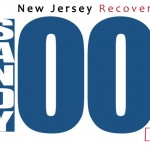Hurricane Isaac Six Months Later: $500 Million in Recovery Dollars – and Counting
BATON ROUGE, La. – In the nearly six months since Hurricane Isaac thrashed Louisiana, recovery has progressed for survivors, businesses and communities.
Below is a snapshot from the Federal Emergency Management Agency (FEMA) of the state and federal assistance dollars approved to date and some milestones reached since the Aug. 29 disaster declaration:
$506.3 million
Eligible Louisianians and their communities have been approved for state and federal assistance totaling $506,308,559.
$416.5 million
The FEMA-administered National Flood Insurance Program has paid $416,486,815 on claims from policyholders in Louisiana.
$215.6 million
FEMA has obligated $215,568,977 to cover 75 percent of the costs incurred by the state and local communities for repairs to storm-damaged infrastructure, removal of storm-related debris and for measures taken to protect people before, during and after the hurricane – including search and rescue, law enforcement, shelters and emergency care.
$160.7 million
The U.S. Small Business Administration (SBA) has approved $160,690,700 in low-interest disaster loans for homeowners, renters and businesses throughout the disaster area.
$129.9 million
FEMA and the state have approved $129,863,867 in disaster assistance for Louisianians through FEMA’s Individuals and Households Program, which helps eligible applicants with emergency home repairs; uninsured personal property losses; and medical, dental and funeral expenses caused by the disaster. It also helps cover other disaster-related expenses.
$7.4 million
FEMA awarded the state a $7.4 million grant to fund a Disaster Case Management Program, which will help Hurricane Isaac survivors who have serious unmet needs even after receiving state and federal disaster assistance.
$6.8 million
FEMA grants of $6,845,882 for Crisis Counseling provided trained counselors to help adults and children in the 26 parishes designated for Individual Assistance work through post-disaster emotional stress.
199,744
A total of 199,744 Louisianians registered for disaster assistance in the 26 parishes designated for Individual Assistance.
$185,015
Workers who have lost their jobs or those who are self-employed and unable to provide their services because of Hurricane Isaac have received $185,015 in Disaster Unemployment Assistance.
141,186
117,540
FEMA housing inspectors completed 141,186 home inspections, the important first step in determining eligibility for housing assistance.
Survivors at 117,540 homes, schools, and community- and faith-based organizations were contacted by the more than 300 FEMA Community Relations specialists who responded to Hurricane Isaac.
41,328
Storm survivors numbering 41,328 visited Disaster Recovery Centers. The first of 40 centers opened Sept. 1, just one day after the Individual Assistance designation.
2,294
1,753
During the 10 weeks of the Transitional Sheltering Assistance program, 2,294 storm survivors and families stayed in hotels on an emergency basis. FEMA paid the hotels for the cost of the rooms and taxes as survivors worked out alternative housing plans.
FEMA specialists numbering 1,753 deployed from around the United States to help Louisiana respond to and recover from Hurricane Isaac. FEMA teams continue to work with Whole Community partners to advance the recovery effort and mitigate against future hazards.
400
More than 400 AmeriCorps, Senior Corps and FEMA Corps members assisted Louisianians in shelters, volunteer centers and neighborhoods, and helped survivors and communities clean up and rebuild after the storm.
150
More than 150 voluntary agencies called on their volunteers, some from throughout the United States, to provide one-on-one help to Isaac survivors in a range of programs and services. Many have joined the long-term recovery effort to meet the needs of survivors that go beyond state and federal assistance dollars.
55
Number of Louisiana parishes designated for assistance under FEMA’s Public Assistance Grant Program: Acadia, Allen, Ascension, Assumption, Avoyelles, Beauregard, Bossier, Caddo, Caldwell, Cameron, Catahoula, Claiborne, Concordia, East Carroll, East Baton Rouge, East Feliciana, Evangeline, Franklin, Iberia, Iberville, Jackson, Jefferson, Jefferson Davis, Lafayette, Lafourche, La Salle, Lincoln, Livingston, Madison, Morehouse, Natchitoches, Orleans, Ouachita, Plaquemines, Point Coupee, Rapides, Richland, St. Bernard, St. Charles, St. Helena, St. James, St. John, St. Landry, St. Martin, St. Mary, St. Tammany, Tangipahoa, Tensas, Terrebonne, Union, Vermillion, Washington, West Baton Rouge, West Carroll and West Feliciana.
26
Number of parishes designated for aid under the Individuals and Households Program: Allen, Ascension, Assumption, East Baton Rouge, East Feliciana, Iberville, Jefferson, Lafourche, Livingston, Morehouse, Orleans, Plaquemines, Pointe Coupee, St. Bernard, St. Charles, St. Helena, St. James, St. John, St. Martin, St. Mary, St. Tammany, Tangipahoa, Terrebonne, Washington, West Baton Rouge and West Feliciana parishes.
26
Number of weeks since FEMA personnel began arriving to assist Louisianians affected by Hurricane Isaac.
10
The SBA opened 10 Business Recovery Centers in seven parishes, where customer service representatives and counselors met with business owners who sustained property damage and economic loss as a result of Hurricane Isaac.
1
Louisiana was the first state in the nation to appoint a state disaster recovery coordinator and local disaster recovery managers under the National Disaster Recovery Framework.
Survivors in Louisiana who have questions regarding their FEMA Individual Assistance may call the FEMA Helpline at 1-800-621-3362 or TTY 1-800-462-7585. Survivors who use 711 Relay or Video Relay Services may call 1-800-621-3362.
View the original here:
Hurricane Isaac Six Months Later: $500 Million in Recovery Dollars – and Counting



 TRENTON, N.J. — One hundred days after Hurricane Sandy made landfall, storm survivors in New Jersey are rebuilding with a hand from neighbors, nearly 28,000 volunteers and more than $1 billion in state-federal response and recovery assistance.
TRENTON, N.J. — One hundred days after Hurricane Sandy made landfall, storm survivors in New Jersey are rebuilding with a hand from neighbors, nearly 28,000 volunteers and more than $1 billion in state-federal response and recovery assistance.